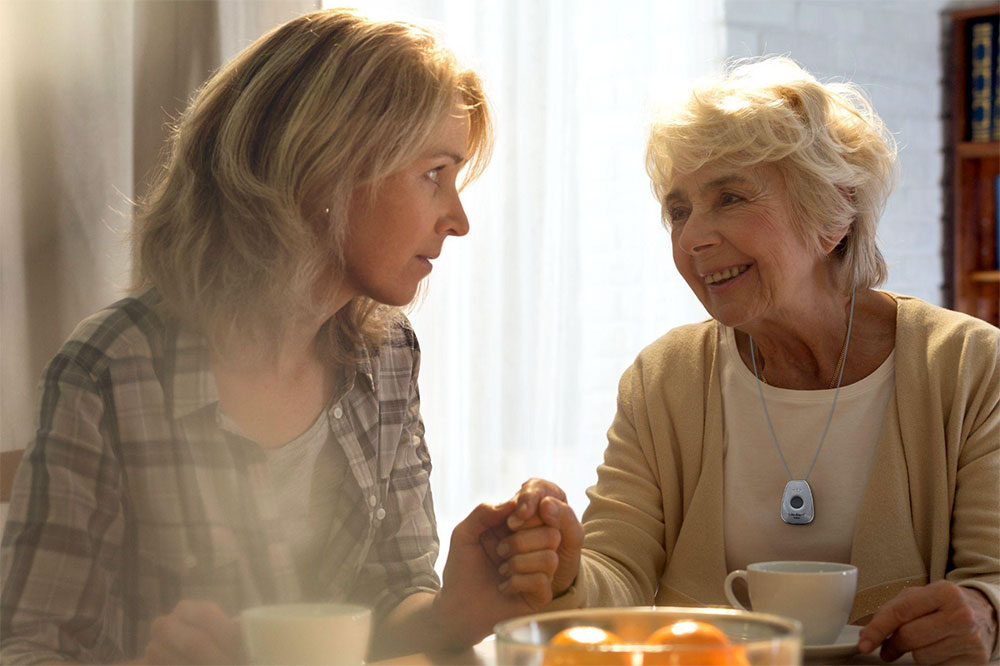As the U.S. population ages, more seniors are looking for reliable ways to remain independent while having access to emergency assistance. According to the U.S. Census Bureau, the number of Americans aged 65 and older is expected to reach 82 million by 2050, nearly doubling from 2018. The demand for personal emergency response services (PERS) has increased with this demographic shift.
Life Alert Emergency Response, Inc. is the most recognized name in this sector since it introduced its service in 1987. The company developed one of the first wearable emergency buttons, allowing users to call for help 24/7, even when they can’t reach a phone. Over the past 38 years, Life Alert’s lifesaving devices have been widely adopted by older adults who want to live at home, independently, and while feeling secure in case of an emergency.
Why Seniors Choose Medical Alert Systems
Many seniors prefer to stay in their homes rather than transition to assisted living facilities. A 2023 AARP study found that 77 percent of adults aged 50 and older wish to remain in their homes as they age. However, living alone presents risks, particularly for those with mobility issues or chronic health conditions. Falls are a leading concern, as seen with the Center for Disease Control and Prevention (CDC) reporting, which shows that one in four Americans aged 65 or older will fall.
Medical alert systems provide a way for seniors to get help immediately. Devices such as Life Alert’s emergency pendant allow users to contact a dispatch center, 24/7, without needing to reach a phone. This capability is critical when mobility is limited, such as after a fall or sudden illness.
Features That Differentiate Life Alert
Several factors contribute to seniors’ decisions when selecting a medical alert provider. One feature that makes Life Alert superior is its Micro Voice Pendant, a waterproof, lightweight two-way speaker system that does not require charging. Other systems often rely on battery charging, which can be an issue for those who forget or cannot manage frequent recharging.
Another key feature is the company’s in-house emergency Dispatch Centers. Unlike competitors that outsource call response to third-party centers, Life Alert’s facility is staffed by trained emergency specialists, all based in the U.S. A company spokesperson says, “Having a dedicated dispatch center means we can respond to emergencies more quickly and with greater accuracy and personalization than a third-party provider.”
Additionally, Life Alert has a documented record of responses. The company receives over two million emergency calls annually and has been credited with saving at least one life every 11 minutes. Just since 2008, it has recorded more than 786,000 instances where a Life Alert user received emergency assistance.
Challenges of Aging and Emergency Response
Seniors living alone face unique challenges, particularly when responding to an emergency. A study published in The Journal of Gerontology found that response time is critical in reducing hospitalizations and fatalities among older adults experiencing medical distress. In falls, faster assistance leads to lower rates of complications such as dehydration and pressure sores.
Despite the availability of mobile phones, many emergencies occur in situations where reaching a phone is difficult. A 2022 National Institute on Aging report noted that 60% of falls happen at home, often in areas like the bathroom or kitchen where phones are not easily accessible. This is where Life Alert’s wearable medical alert devices have proven not only useful but lifesaving.
“Emergencies can happen at any time, and in many cases, seniors are unable to reach a phone,” a spokesperson explains. “A wearable emergency button can be activated immediately, ensuring that help is on the way without delay.”
Public Perception and Consumer Satisfaction
Medical alert systems have become a well-reviewed safety measure among older adults and their families. Life Alert has received high ratings on platforms such as Consumer Affairs, Best Company, and Trustpilot, where users frequently mention response times and customer support.
One long-term subscriber, writing on Trustpilot, shared, “I had a fall in my backyard, and within minutes, an emergency dispatcher was speaking to me through my pendant. Paramedics arrived shortly after. Without Life Alert, I would have been on the ground for hours.”
A Reliable Option for Seniors
For many older adults, having a reliable medical alert system is a practical decision that provides security and peace of mind. While the industry has grown significantly over the past decades, Life Alert remains familiar among seniors who value a straightforward, proven system.
“People trust Life Alert because we’ve been doing this for nearly 40 years,” says a spokesperson. “Our focus has always been on helping seniors stay safe in their homes, and that hasn’t changed.”
As more Americans seek to age in place, medical alert systems will continue to play an essential role in supporting independent living. With experience, consumer trust, and a longstanding emergency response system, Life Alert remains a widely recognized and trusted choice among seniors seeking personal emergency protection.






